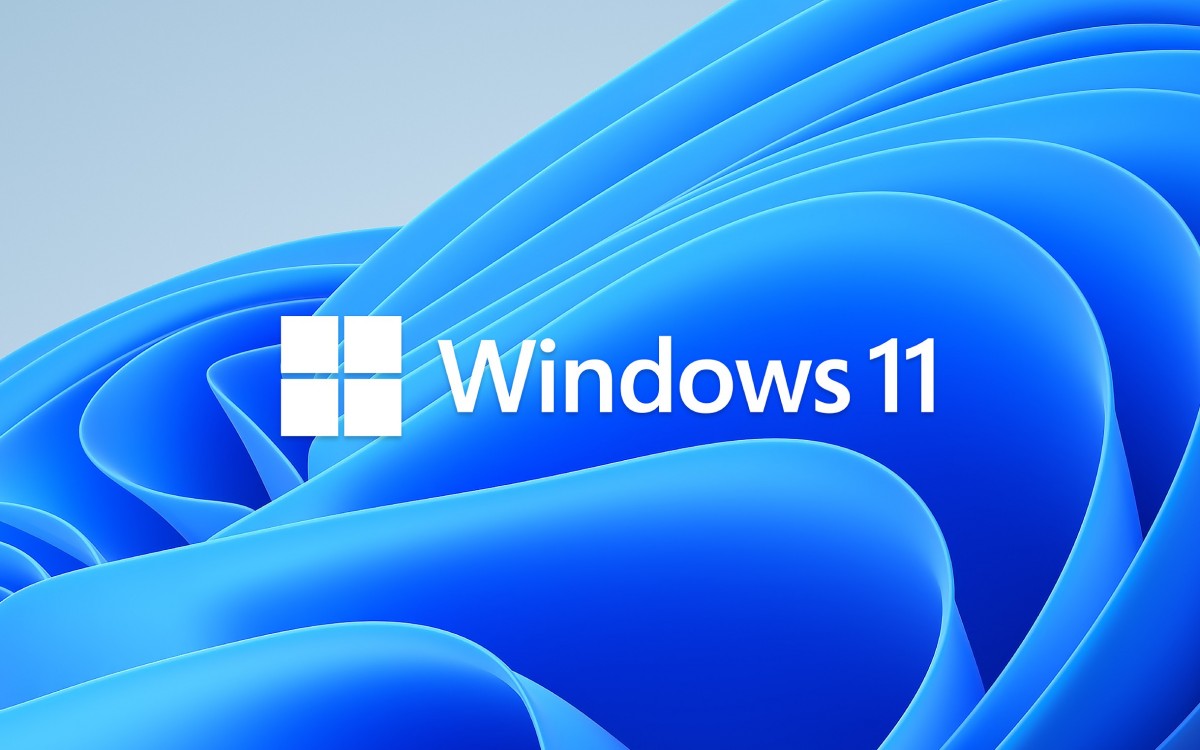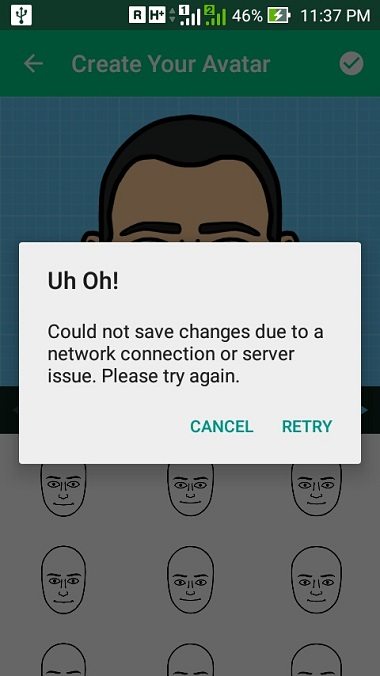In this comprehensive guide, we will walk you through the step-by-step process of installing TWRP Recovery on any Android device. Whether you’re a seasoned Android enthusiast or just getting started with customizing your device, this guide will equip you with the knowledge and tools needed to successfully install TWRP Recovery in 2023. We understand that customizing your Android device can seem daunting, but with the right instructions, you’ll unlock a world of possibilities for tweaking and enhancing your device’s performance and features.
The Need for a Custom Recovery
By default, most Android device manufacturers ship their products with locked bootloaders. This is done to ensure that users stick to the manufacturer’s ecosystem and limit the ability to make significant changes to the device’s software. However, this locked state can be quite restrictive for tech-savvy users who want to explore the full potential of their Android devices.
Unlocking the bootloader is the first step to gaining greater control over your device. It’s a process that, while offering numerous benefits, also comes with some risks, such as voiding warranties and potential data loss. Once your bootloader is unlocked, you can perform various advanced tasks, including flashing custom ROMs, custom kernels and gaining root access through tools like Magisk. But to embark on this journey of customization and optimization, you need a reliable ally and that’s where a custom recovery like TWRP(Team Win Recovery Project) comes into play.
Why Choose TWRP Recovery?
In the past, users often relied on ClockworkMod Recovery(CWM), a well-known custom recovery. While CWM was effective for many tasks, it had limitations, such as a lack of touch-based controls, which required users to navigate actions using physical hardware buttons. To overcome these limitations, the Team Win Recovery Project(TWRP) was born, offering a more user-friendly and feature-rich custom recovery experience.
TWRP is renowned for it’s intuitive touch-based interface, making it easier for users to perform a wide range of tasks without the need for physical buttons. It provides a user-friendly environment for tasks such as installing custom ROMs, creating and restoring backups, sideloading ZIP files and much more. Whether you’re a seasoned Android Modder or a newbie looking to explore the world of custom Android software, TWRP is the go-to choice for many.
Step 1: Take a Backup
While installing TWRP Recovery itself generally does not lead to data loss, it’s crucial to be prepared for unexpected situations. Unlocking the bootloader, which is often a prerequisite for installing TWRP, can sometimes result in data loss. Additionally, certain actions within TWRP, like performing a factory reset, can wipe your device’s data. Therefore, it’s highly recommended to take a complete backup of all your data before proceeding with the installation process. This includes your apps, app data, contacts, messages and any other important information.
Creating a full backup is a straightforward process within TWRP. You can use the built-in backup feature to create a complete image of your device, which can be restored if anything goes wrong during the installation or if you want to revert to your previous setup in the future.
Step 2: Enable USB Debugging and OEM Unlocking
Before you can begin the process of installing TWRP, you need to ensure that your device is set up to communicate with your computer. This involves enabling two critical settings on your Android device: USB Debugging and OEM Unlocking.
- USB Debugging: This option allows your device to communicate with your computer in Android Debug Bridge(ADB) mode. ADB is a command-line tool that’s used to perform various tasks on Android devices, including installing custom recoveries like TWRP. To enable USB Debugging:
- Go to your device’s “Settings”.
- Scroll down and tap on “About Phone” or “About Device”.
- Find the “Build Number” entry and tap on it repeatedly(usually seven times) until you see a message indicating that Developer Options are enabled.
- Now, go back to the main “Settings” screen and tap on “System” or “System & Updates”.
- Look for “Developer Options” and tap on it.
- Find “USB Debugging” and toggle it on.
- OEM Unlocking: This setting allows you to unlock the device’s bootloader officially. If you’ve already unlocked the bootloader previously, you can skip this step and only enable USB Debugging. To enable OEM Unlocking:
- Stay in the “Developer Options” section as mentioned in the USB Debugging steps.
- Find “OEM Unlocking” and toggle it on.
Enabling these settings is crucial for the later stages of the TWRP installation process when you’ll need to communicate with your device through ADB and Fastboot.
Step 3: Unlock Bootloader
Unlocking the bootloader is a prerequisite for installing TWRP Recovery on most Android devices. It’s an essential step that allows you to gain full control over your device’s system partitions and install custom recoveries and ROMs. However, keep in mind that unlocking the bootloader has some important consequences:
- It voids the warranty of most Android devices.
- It may erase all data on your device.
If you’re comfortable with these implications and are eager to proceed, unlocking the bootloader is a straightforward process. The method can vary slightly depending on your device’s manufacturer, so it’s essential to consult specific guides for your device. Here are some general steps to unlock the bootloader:
- Boot to Fastboot Mode: Power off your device completely. Then, press and hold a specific combination of hardware buttons(depending on your device) to boot into Fastboot mode. This combination varies between devices but often involves holding the Volume Down button while pressing the Power button.
- Connect to Your Computer: Use a USB cable to connect your Android device to your computer. Ensure that you have the necessary USB drivers installed on your computer.
- Unlock the Bootloader: On your computer, open a command prompt or terminal window and enter the following command:
fastboot oem unlock
Confirm the bootloader unlock request on your device’s screen. This step may vary based on your device.
- Reboot Your Device: After successfully unlocking the bootloader, you can reboot your device by entering:
fastboot reboot
Now that you’ve unlocked the bootloader, you’re one step closer to installing TWRP Recovery and enjoying the full benefits of customizing your Android device.
Step 4: Install ADB and Fastboot on PC
Before you can proceed with installing TWRP Recovery, you’ll need to set up the Android SDK Platform Tools on your computer. These tools include ADB(Android Debug Bridge) and Fastboot, which are essential for communicating with your Android device while it’s in bootloader mode. Here’s how to install ADB and Fastboot on your PC:
- Download the Android SDK Platform Tools: Visit the official Android Developers website to download the latest version of the Android SDK Platform Tools. These tools are available for Windows, macOS and Linux.
- Extract the ZIP File: Once you’ve downloaded the ZIP file, extract it’s contents to a location on your PC, such as the desktop or a dedicated folder.
- Test ADB and Fastboot: Open a command prompt or terminal window on your computer and navigate to the folder where you extracted the Android SDK Platform Tools. Run the following command to test ADB:
adb version
You should see the version of ADB displayed in the terminal, confirming that it’s working correctly. Similarly, test Fastboot with:
fastboot version
This should display the Fastboot version.
Now that ADB and Fastboot are set up on your computer, you’re ready to proceed with the installation of TWRP Recovery on your Android device.
Step 5: Download TWRP Recovery for Your Android Device
The next step in installing TWRP Recovery is to obtain the appropriate TWRP Recovery image for your specific Android device. It’s crucial to download the correct version of TWRP that matches your device’s model and variant. Here’s how to find and download the TWRP Recovery image:
- Visit the Official TWRP Website: Start by visiting the official TWRP website at https://twrp.me/. This website hosts the official TWRP Recovery images for a wide range of Android devices.
- Search for Your Device: Use the search bar on the TWRP website to look for your device. Enter your device’s name or model number to find the appropriate TWRP image.
- Download TWRP Recovery: Once you’ve found your device, click on it to access the download page. You’ll typically find both TWRP image files with a “.img” extension and TWRP ZIP files.
- TWRP Image(twrp.img): This is the raw TWRP Recovery image that you’ll use for installing TWRP. Download this file to your computer.
- TWRP ZIP(twrp.zip): Some devices require both the TWRP image and the TWRP ZIP file. If your device has both options available, download both files.
It’s essential to download the TWRP image and, if applicable, the TWRP ZIP file for your device. Having both files on hand ensures that you have the necessary resources for the installation process.
Step 6: Check If Your Device Has a Recovery Partition
Before proceeding with the actual installation of TWRP Recovery, it’s crucial to determine whether your Android device has a recovery partition or follows an A/B partition scheme. This information will guide you in choosing the correct method for installing TWRP. Follow these steps to check your device’s partition scheme:
- Download and Extract Android SDK Platform Tools: If you haven’t already done so, download and extract the Android SDK Platform Tools to a convenient location on your computer.
- Enable USB Debugging: Ensure that USB Debugging is enabled on your Android device by following the instructions provided earlier in this guide.
- Connect Your Device to Your Computer: Use a USB cable to connect your Android device to your computer.
- Open a Command Prompt or Terminal Window: On your computer, open a command prompt(Windows) or terminal window(macOS/Linux).
- Access the Platform Tools Folder: Navigate to the folder where you extracted the Android SDK Platform Tools.
- Enter ADB Shell: Enter the following command to access the ADB shell:
adb shell
- Check the Partition Type: Inside the ADB shell, enter the following commands:
cd /dev/block/platform
ls -la /dev/block/bootdevice/by-name
Look for keywords like “recovery”, “recovery_a”, or “recovery_b” in the output. If you see any of these keywords, your device has a recovery partition.
If you find the keywords “recovery”, “recovery_a”, or “recovery_b” in the output, your device has a recovery partition. This means you can proceed with flashing TWRP to the recovery partition. If you don’t see these keywords, your device follows an A/B partition scheme and you’ll need to use the boot partition to install TWRP.
Step 7: Install TWRP Recovery on Devices with a Recovery Partition
If your device has a recovery partition, you can directly flash TWRP Recovery to that partition. Here’s how to do it:
- Test TWRP for One-Time Usage: To test TWRP for one-time usage without permanently installing it, enter the following command:
fastboot boot twrp.img
This command boots your device into TWRP Recovery temporarily, allowing you to perform actions like making backups or flashing ZIP files. Please note that this is a one-time boot and won’t permanently install TWRP.
- Permanently Install TWRP: If you’re satisfied with the one-time test and want to permanently install TWRP to the recovery partition, enter the following command:
fastboot flash recovery twrp.img
This command flashes TWRP Recovery to the recovery partition of your device, making it accessible whenever you boot into recovery mode.
- Reboot to Recovery Mode: After flashing TWRP, you can reboot your device into TWRP Recovery by entering the following command:
fastboot reboot recovery
This command ensures that your device boots directly into TWRP Recovery.
Now that you’ve successfully installed TWRP Recovery on your device with a recovery partition, you have a powerful tool at your disposal for advanced customizations and optimizations.
Step 8: Install TWRP Recovery on Devices without a Recovery Partition
If your device doesn’t have a recovery partition and follows an A/B partition scheme, you’ll need to use the boot partition to install TWRP. Follow these steps:
- Boot into TWRP: Enter the following command to boot your device into TWRP Recovery:
fastboot boot twrp.img
This command temporarily boots your device into TWRP Recovery, allowing you to perform actions like making backups or flashing ZIP files. Please note that this is a one-time boot and won’t permanently install TWRP.
- Install TWRP for One-Time Usage: If you only need TWRP for one-time usage, you can simply perform your desired actions while in TWRP, such as flashing custom ROMs or creating backups.
- Permanently Install TWRP: If you wish to permanently install TWRP on your device without a recovery partition, follow these steps:a. In TWRP, navigate to the “Install” section.
b. Select the TWRP ZIP file(twrp.zip) that you downloaded earlier.
c. Swipe to confirm the installation. This action permanently installs TWRP to your device’s boot partition.
- Reboot to TWRP: After flashing TWRP, you can reboot your device into TWRP Recovery by using the reboot option in TWRP’s menu.
Congratulations! You’ve successfully installed TWRP Recovery on your Android device without a recovery partition, unlocking even more possibilities for customization and optimization.
Step 9: Boot Device to Fastboot Mode
With TWRP Recovery successfully installed on your device, it’s crucial to know how to boot your device into Fastboot mode. This mode allows you to communicate with your device while it’s in bootloader mode, which is necessary for various tasks, including flashing custom recoveries and ROMs. Here’s how to boot your device into Fastboot mode:
- Ensure USB Debugging Is Enabled: Make sure that USB Debugging is enabled on your device, as explained earlier in this guide.
- Connect Your Device to Your Computer: Use a USB cable to connect your Android device to your computer.
- Access the Platform Tools Folder: Open a command prompt(Windows) or terminal window(macOS/Linux) and navigate to the folder where you extracted the Android SDK Platform Tools.
- Boot to Fastboot Mode: Enter the following command to boot your device into Fastboot mode:
adb reboot bootloader
Your device’s screen should now display Fastboot mode, indicating that it’s ready for bootloader-related actions.
Step 10: Additional Methods for Installing TWRP without a ZIP File
Some Android devices, especially those with A/B partitions, may not have a TWRP ZIP file available. In such cases, you can use alternative methods to install TWRP. Here are a few options:
Method 1: Install TWRP to Ramdisk
For devices without a TWRP ZIP file but with a TWRP IMG file, you can flash TWRP to the Ramdisk. This method involves temporarily booting into TWRP and then flashing the IMG file to the Ramdisk for permanent installation. Here’s how:
- Boot your device to TWRP using the command:
fastboot boot twrp.img
- After booting into TWRP, navigate to the “Install” section.
- Select the TWRP IMG file(twrp.img) and flash it to the Ramdisk.
- Reboot your device to TWRP for permanent access.
Method 2: Using Flash Current TWRP
On some devices, you may not find the “Install Recovery Ramdisk” option in TWRP. Instead, there’s a “Flash Current TWRP” option. This feature detects the temporarily booted TWRP and permanently flashes it to your device. Here’s how to use it:
- Boot your device to TWRP temporarily using the command:
fastboot boot twrp.img
- In TWRP, go to the “Advanced” section.
- Select “Flash Current TWRP”.
- TWRP will permanently flash to your device.
- Reboot your device to TWRP to access it’s features.
Method 3: Flash TWRP IMG from TWRP
If your device has a recovery partition, you can directly flash the TWRP IMG file to the recovery partition from within TWRP itself. Here’s how:
- Place the twrp.img file in the platform-tools folder on your PC and your device’s internal storage.
- Temporarily boot your device to TWRP using the command:
fastboot boot twrp.img
- In TWRP, go to the “Install” section.
- Tap on “Install Image” and select the twrp.img file.
- Choose the “Recovery” partition for installation.
- TWRP will be permanently flashed to your device’s recovery partition.
- Reboot your device to TWRP for full functionality.
Step 11: How to Boot into TWRP Recovery on Android
Now that you have successfully installed TWRP Recovery on your Android device, you might wonder how to access it when needed. Booting into TWRP Recovery is a straightforward process and can be done using different methods. Here are some common ways to boot into TWRP Recovery on your Android device:
- Using ADB: You can use the
adb reboot recoverycommand from your computer while your device is connected via USB to boot directly into TWRP Recovery. - Using Fastboot: If your device is in Fastboot mode, you can use the
fastboot reboot recoverycommand to boot into TWRP Recovery. - Using Hardware Key Combinations: On some devices, you can use specific hardware key combinations to boot into recovery mode. Common key combinations include holding the Volume Up button and the Power button simultaneously or holding the Volume Down button and the Power button simultaneously during device startup.
- From the System: If you have permanently installed TWRP, you can also boot into it directly from your device’s system. Here’s how:
- Go to your device’s “Settings”.
- Scroll down and select “System” or “System & Updates”.
- Tap on “Developer Options”.
- Look for the “Advanced Reboot” or “Advanced Restart” option and enable it.
- Once enabled, you can long-press the Power button to access the power menu.
- From the power menu, select “Recovery”. Your device will boot into TWRP Recovery.
Now that you know how to boot into TWRP Recovery, you can start exploring it’s features and capabilities.
Using TWRP Recovery – A Quick Overview
TWRP Recovery provides a wide range of features and functions that can help you customize, troubleshoot and optimize your Android device. Here’s a quick overview of some common tasks you can perform using TWRP Recovery:
- Creating and Restoring Backups: TWRP allows you to create full backups of your device, including the system, apps, data and even the boot and recovery partitions. You can later restore these backups if you encounter issues or want to revert to a previous state.
- Flashing Custom ROMs: TWRP is commonly used to flash custom ROMs, which are modified versions of the Android operating system. Custom ROMs can offer improved performance, new features and a fresh look for your device.
- Installing Custom Kernels: Advanced users can flash custom kernels through TWRP to enhance device performance, battery life and tweak various hardware-related settings.
- Rooting Your Device: TWRP can be used to flash Magisk, a popular rooting solution, to gain root access on your device. Rooting allows you to access system files and perform advanced customizations.
- Sideloading ZIP Files: You can use TWRP to sideload ZIP files, including official software updates, mods and customizations, directly onto your device.
- Wiping Data and Cache: TWRP provides options for wiping the device’s data, cache, system and other partitions. This is useful when you want to perform a factory reset or troubleshoot issues.
- Mounting Partitions: TWRP allows you to manually mount and unmount various partitions on your device, giving you access to their contents through a file manager.
- File Management: You can manage files on your device through TWRP’s built-in file manager. This can be helpful for moving, copying, or deleting files.
- Terminal Access: For advanced users, TWRP provides a terminal interface for running commands directly on your device.
These are just some of the tasks you can perform with TWRP Recovery. The specific options and features may vary slightly depending on your device and the version of TWRP you have installed.
Maintaining and Updating TWRP Recovery
TWRP Recovery is a powerful tool, but it’s essential to keep it up to date to ensure compatibility with the latest Android versions and security patches. Here’s how to maintain and update TWRP Recovery:
- Check for TWRP Updates: Periodically visit the official TWRP website to see if there are updates available for your device. New versions may include bug fixes, improvements and compatibility updates.
- Download the Latest TWRP Image: If an updated TWRP version is available, download the latest TWRP image(twrp.img) for your device from the official website.
- Follow the Installation Process: To update TWRP, you can follow the same installation process outlined earlier in this guide. Flash the new TWRP image to either the recovery partition or the boot partition, depending on your device’s configuration.
- Be Cautious with Updates: While updating TWRP is generally safe, be cautious when updating to new versions. Read the release notes and any specific instructions provided for your device to ensure a smooth update process.
By keeping TWRP Recovery up to date, you’ll benefit from the latest features and improvements, ensuring a seamless experience when customizing and optimizing your Android device.
Frequently Asked Questions(FAQs)
To provide you with a comprehensive guide to installing TWRP Recovery on Android, we’ve compiled some frequently asked questions(FAQs) to address common queries and concerns:
1. Is it safe to install TWRP Recovery on my Android device?
- Installing TWRP Recovery is generally safe if done correctly. However, it can void your device’s warranty and there are risks involved, such as data loss or bricking your device if not done carefully. Always follow instructions carefully and back up your data.
2. Can I install TWRP on any Android device?
- TWRP support varies by device. You can check the official TWRP website to see if there’s a TWRP image available for your specific device model and variant.
3. Do I need to root my device to install TWRP Recovery?
- No, you don’t need to root your device to install TWRP Recovery. However, unlocking the bootloader is usually a prerequisite, which can void warranties.
4. Can I install custom ROMs without TWRP Recovery?
- While you can install custom ROMs using other methods, such as through ADB, TWRP Recovery offers a user-friendly interface and additional features that make the process easier and more reliable.
5. Will installing TWRP Recovery wipe my data?
- Installing TWRP Recovery itself typically doesn’t wipe your data. However, unlocking the bootloader or certain actions within TWRP, like performing a factory reset, can result in data loss. It’s crucial to back up your data before proceeding.
6. Can I install TWRP on a device with a locked bootloader?
- In most cases, you cannot install TWRP on a device with a locked bootloader. Unlocking the bootloader is usually a prerequisite for installing custom recoveries like TWRP.
7. Can I use TWRP Recovery to back up and restore app data?
- Yes, TWRP allows you to create full backups of your device, including app data. You can later restore these backups to recover app data.
8. Is TWRP Recovery available for iOS devices?
- No, TWRP Recovery is designed specifically for Android devices and is not compatible with iOS devices.
9. Does installing TWRP Recovery affect Android updates?
- Installing TWRP Recovery itself doesn’t affect Android updates. However, if you modify your device’s system or bootloader, it can impact the ability to receive official over-the-air(OTA) updates.
Conclusion
Congratulations! You’ve successfully installed TWRP Recovery on your Android device, unlocking a world of customization and optimization possibilities. Whether you’re interested in flashing custom ROMs, creating backups, or tweaking your device’s performance, TWRP provides a user-friendly platform to explore and enhance your Android experience.
It’s important to remember that with great power comes great responsibility. While TWRP offers incredible flexibility and control over your device, it also comes with risks, such as voiding warranties and potential data loss. Always proceed with caution, back up your data and follow instructions carefully when working with custom recoveries and customizations.
Now that you have TWRP Recovery installed, take the time to explore it’s features and tailor your Android device to your preferences. Whether you’re a seasoned Android enthusiast or a curious newcomer, TWRP opens up a world of possibilities for your Android journey in 2023 and beyond.
Experiencing difficulties with your Device, check out our “How To” page on how to resolve some of these issues.








1 comment